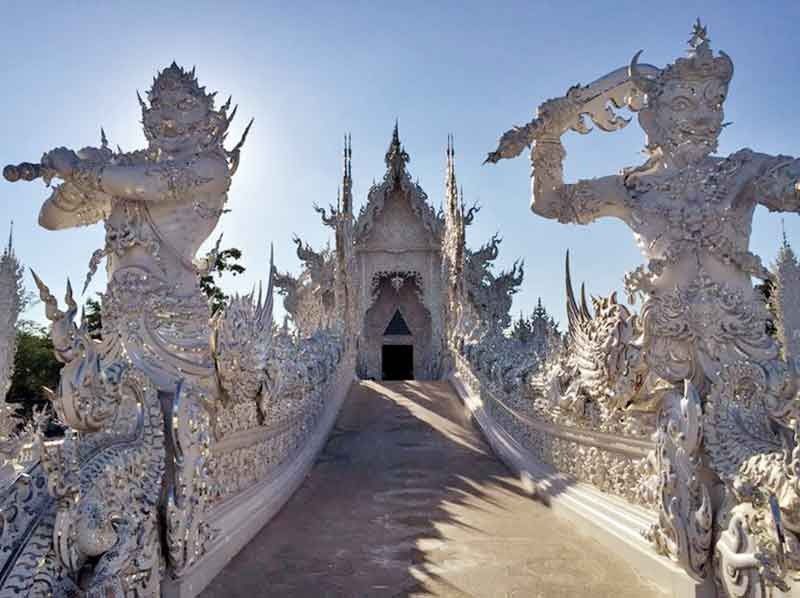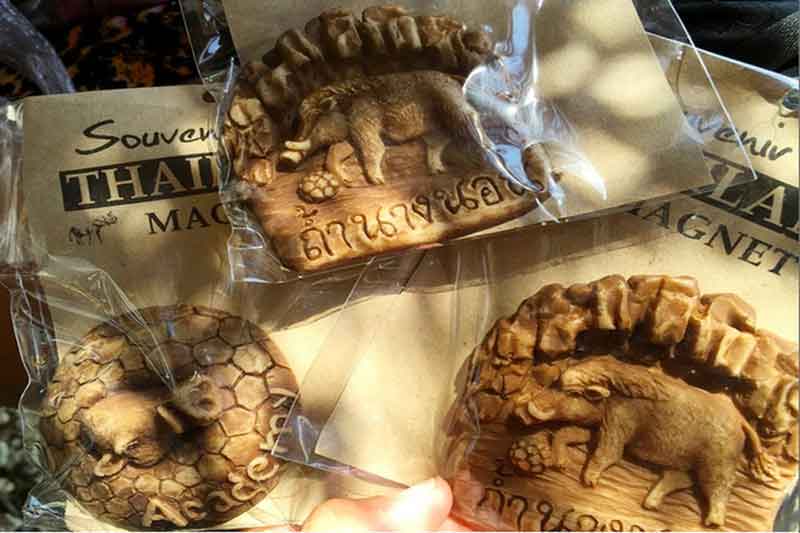Chiang Rai: ‘Wild Boars’ & temples

MANILA, Philippines — Security around the Tham Luang cave in Chiang Rai, Thailand has been tight since the rescue of 12 young soccer players from the labyrinthine cave complex last July gripped the world and united Thailand. Locals never expected the cave would become a tourist attraction.
Forest ranger Summart Suttothon remembers the rescue operation so well. When STARweek visited the cave complex, Suttothon recounted being among the forest rangers who pumped water out of the cave during the rescue operation that lasted nine days.
Suttothon says he helped in the rescue of the boys because he remembered his son.
Previously, only locals visited the cave; now, on any given day, there could be up to 4,000 tourists, the forest ranger shares.
A poster of the 12 boys’ bicycles now greets tourists, who are barred from entering the cave by a newly-installed fence. In front of the cave is a shrine of the so-called Sleeping Lady. Legend has it that a forlorn woman in search of her lost husband rested for a while only to be swallowed up by the earth, turning her into the mountain range that locals say is shaped like a reclining woman.

Tea plants on the rolling terrain of the Chui Fong Tea Farm.
A tour guide says that maybe, the Sleeping Lady helped in the boys’ rescue.
The Thai soccer boys, dubbed the Wild Boars, have become models for souvenir items. Refrigerator magnets shaped like a boar kicking a soccer ball, even a poster of the boys as monks, are sold at the entrance to the cave.
Just around the corner from the cave, a memorial is set to rise to commemorate the heroism of Thai navy diver Saman Gunan, who died during the rescue operations. His statue will be surrounded by, aptly enough, 12 statues of boars.
The cave complex is just one among many sights to catch in Chiang Rai. The province may have gained fame because of the dramatic rescue, but it is also home to temples with exquisite Thai architecture, tea and coffee plantations and an organic farm for a farm-to-table experience.
Wat Rong Khun, or the White Temple, built by Chiang Rai native and visual artist Chalermchai Kositpipat, is a surprising mix of spirituality and popular culture. Hanging on the trees and serving as plant pots are the heads of superheroes like Ironman, Hellboy and Batman.
The temple itself is an eerie sight – crossing the bridge to the temple one is greeted by a river of hands representing the suffering souls in hell. The main chapel or ubosot is flanked by two demons. Inside the chapel, images of spaceships, Pokemons, Spidermen and other pop culture icons decorate the walls.

Wild boars have become a popular symbol on souvenir items like fridge magnets.
Another temple, this time built by Chalermchai’s student Salanok, features the color combination of blue and gold – Wat Rong Suer Ten, or the Blue Temple, is a more colorful and traditional take on the Buddhist temple. The temple is flanked at the entrance by two snake-like creatures called naga. At the back of the temple is a majestic white Buddha that faces the setting sun.
Chiang Rai is also known as the main supplier of tea leaves in Thailand due to its climate and fertile soil. In Chui Fong Tea Farm, one can walk between hedges of different varieties of tea plants – assam, green, oolong and black – that stretch as far as the eye can see over gently rolling hills.
For coffee lovers, the place to be is Akha Mino Coffee where, aside from a good brew, one can have photos taken wearing the traditional garb of the Akha hill tribe, and even have a ride on the farm’s trusty carabao.
Organic food lovers can have a breath of fresh air while eating good food at the Rai Ruen Rom organic farm where, according to the owner Apple Kitaphanich, one can enjoy their farm stay houses, experience organic farming and even learn how to make Thai batik using the natural dyes of plants like marigold.
Chiang Rai may be a sleepy provincial town compared to more vibrant cities like Bangkok and Chiang Mai, but its rolling hills and warm climate make this rural town a worthy destination for an escape from the fast-paced urban life.



















